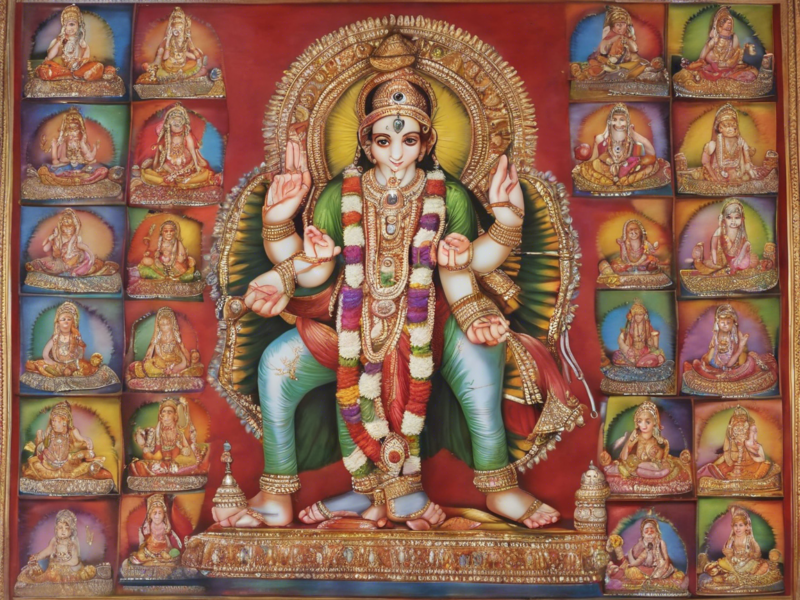Introduction
The Ramlala Ki Murti, also known as the deity of Lord Rama as an infant, holds significant cultural and religious importance in Hinduism. The small image or idol of Lord Rama as a child is revered by millions of devotees across the globe. In this comprehensive guide, we will delve into the significance, history, rituals, and beliefs associated with Ramlala Ki Murti in Hindu culture.
The Significance of Ramlala Ki Murti
-
Avatar of Lord Rama: Ramlala Ki Murti represents the incarnation of Lord Rama as a child. According to Hindu mythology, Lord Rama is believed to be an incarnation of the Hindu God Vishnu. The depiction of Ramlala as an infant symbolizes the innocence, purity, and divinity of the deity.
-
Devotional Practices: Devotees often engage in prayer, worship, and offerings to Ramlala Ki Murti as a way to seek blessings, protection, and guidance in their lives. The act of worshiping the infant Lord Rama is seen as a means to connect with the divine and seek spiritual fulfillment.
-
Symbol of Love and Compassion: Ramlala Ki Murti is considered a symbol of love, compassion, and righteousness. The teachings and life story of Lord Rama, depicted through the infant form, inspire devotees to lead a life of virtue, duty, and moral values.
History of Ramlala Ki Murti
The history of Ramlala Ki Murti dates back to the ancient epic Ramayana, which narrates the life and adventures of Lord Rama. The birth of Ramlala is celebrated as Ram Navami, a significant Hindu festival that commemorates the birth of Lord Rama.
The most famous temple dedicated to Ramlala Ki Murti is the Ram Janmabhoomi in Ayodhya, India. The temple is believed to be situated at the birthplace of Lord Rama and has been a focal point of religious and political debate due to its historical significance.
Rituals and Celebrations
-
Puja and Aarti: Devotees offer prayers, flowers, incense, and sweets to Ramlala Ki Murti during daily puja rituals. Aarti is performed to show reverence and devotion to the deity, accompanied by the singing of hymns and bhajans.
-
Festivals: Special festivals such as Ram Navami, Diwali, and Janmashtami are celebrated with great fervor and enthusiasm in honor of Ramlala Ki Murti. These festivals involve elaborate rituals, processions, and community gatherings to commemorate the life and teachings of Lord Rama.
Beliefs and Symbolism
-
Protection and Blessings: Devotees believe that worshiping Ramlala Ki Murti can bring protection, blessings, and prosperity into their lives. The deity is considered a guardian and guide for those who seek solace and divine intervention.
-
Karma and Dharma: The stories and teachings of Lord Rama, depicted through Ramlala Ki Murti, emphasize the importance of karma (action) and dharma (duty). Devotees are inspired to uphold righteousness, uphold moral values, and fulfill their responsibilities towards society.
FAQs
- What is the significance of Ramlala Ki Murti in Hindu culture?
-
Ramlala Ki Murti represents the infant form of Lord Rama and is revered for its symbolism of purity, divinity, and innocence.
-
Where is the most famous temple of Ramlala Ki Murti located?
-
The most famous temple of Ramlala Ki Murti is situated in Ayodhya, India, known as the Ram Janmabhoomi.
-
What are the common rituals associated with Ramlala Ki Murti?
-
Devotees usually offer prayers, perform puja, conduct aarti, and make offerings of flowers, incense, and sweets to Ramlala Ki Murti.
-
How does the worship of Ramlala Ki Murti inspire devotees?
-
The worship of Ramlala Ki Murti inspires devotees to lead a life of love, compassion, righteousness, and moral values based on the teachings of Lord Rama.
-
Which festivals are dedicated to Ramlala Ki Murti in Hinduism?
- Festivals such as Ram Navami, Diwali, and Janmashtami are celebrated to honor Ramlala Ki Murti and commemorate the life and teachings of Lord Rama.
In conclusion, Ramlala Ki Murti holds a special place in Hindu culture as a symbol of divinity, love, compassion, and righteousness. The worship of Ramlala Ki Murti serves as a reminder for devotees to embrace moral values, fulfill their duties, and seek spiritual enlightenment through the teachings of Lord Rama.

